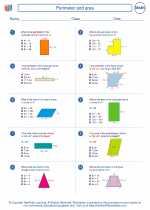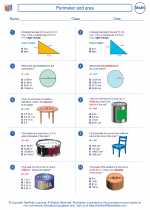Scalene Triangle
A scalene triangle is a type of triangle that has three sides of different lengths. In other words, all the three sides of a scalene triangle are unequal, and all the three angles are also different from each other.
To identify a scalene triangle, you can look for the following characteristics:
- Three unequal side lengths
- Three different interior angles
Properties of a Scalene Triangle:
- Each interior angle measures less than 180 degrees
- No two sides are equal in length
- No two angles are equal in measure
Formulas and Concepts:
Perimeter of a Scalene Triangle:
The perimeter of a scalene triangle is found by adding the lengths of all three sides together.
Perimeter = Side1 + Side2 + Side3
To calculate the area of a scalene triangle, you can use Heron's formula, which is based on the semi-perimeter of the triangle (s) and the lengths of its three sides (a, b, c).
Area = √[s(s - a)(s - b)(s - c)], where s = (a + b + c) / 2
Examples of Scalene Triangles:
Here are some examples of scalene triangles:
- Triangle ABC: with side lengths AB = 5 units, BC = 7 units, and AC = 9 units
- Triangle PQR: with side lengths PQ = 8 cm, QR = 10 cm, and PR = 12 cm
Properties and Characteristics:
Since all the sides and angles of a scalene triangle are different, it does not have any lines of symmetry or rotational symmetry. It is also not a right-angled triangle, as it does not have a right angle (90 degrees).
Practice Problems:
1. Calculate the perimeter and area of a scalene triangle with side lengths 6 cm, 8 cm, and 10 cm.
2. Determine whether the following triangle is scalene or not, given the side lengths: AB = 3 units, BC = 4 units, and AC = 5 units.
Understanding the concept of scalene triangles is important in geometry and can help in solving various problems related to triangles and their properties.
Now that you have a good understanding of scalene triangles, you can practice solving problems and identifying them in different geometric figures.
Happy studying!
.◂Math Worksheets and Study Guides Eighth Grade. Perimeter and area

 Worksheet/Answer key
Worksheet/Answer key
 Worksheet/Answer key
Worksheet/Answer key
 Worksheet/Answer key
Worksheet/Answer key
 Worksheet/Answer key
Worksheet/Answer key
